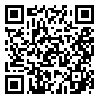BibTeX | RIS | EndNote | Medlars | ProCite | Reference Manager | RefWorks
Send citation to:
URL: http://jdisabilstud.org/article-1-2638-en.html
2- Family Counseling Group, University of Tehran, Tehran, Iran
3- Psychology Group Instructor, Payam Noor University, Tehran, Iran
Abstract
Background & Objectives: The new coronavirus disease 2019 (COVID–19) emerged from Wuhan, China, in December 2019, infecting and killing millions of people. It is now regarded as one of the major concerns all around the world. The closure of schools due to the outbreak of coronavirus encountered children with autism and their families with serious educational problems. Having closed or part–time schools and rehabilitation centers, meeting all the physical and educational needs of children with autism was impossible. In 2014, the Centers for Disease Control and Prevention estimated the prevalence of autism to be 1 in 68. This figure has dramatically increased compared to the previous estimations in 2012, which was 1 in 88. Poor eye contact, a lack of emotions or social interactions, deficits in the use of non–verbal behaviors, and lack of age–appropriate communication are considered the manifestations of social deficits in autism. Such behaviors make parents spend more time fulfilling the needs of their children. The present study seeks to address the problems of children with autism and its impact on parents, as well as the marital challenges of these parents during the coronavirus disease, using a qualitative approach with in–depth interviews.
Methods: The present research applied a qualitative approach using a phenomenological method. Using theoretical sampling, 12 women with autistic children were selected from the Welfare Organization of Zanjan Province, Iran, during 2020 and 2021. Then, they were undertaken in–depth and semi–structured interviews. The sampling process continued to achieve theoretical saturation. Simultaneously, data collection and analysis were carried out through content analysis. Since the research method was qualitative and phenomenological, the researchers used Colaizzi's 7–stage analysis method. These interviews lasted 12 days, each taking 45 minutes to 1 hour. Ethical considerations included obtaining informed consent to conduct the interview, voluntary entry and exit, keeping the names and contact numbers of the participating members confidential, confidentiality of the interviews, and obtaining permission to record the interviews.
Results: By carefully examining the interviews, the main concepts and themes were presented during a long, detailed, conceptual process called "specific behavioral problems." These problems consist of 7 main themes: school closing problems (comprising subthemes of disrupting daily habits, mental turmoil, missing classmates and teachers, and worry about continuing education), educational problems (consist of subthemes of the inability to plan, attention and concentration disorders, the inability to use the training available in class groups, the lack of visual communication with the teacher, the lack of learning conditions at home due to the special conditions of the child and the mere teaching of skills self–help), the quality of spouses' relationship with each other (comprising subthemes of reduction in sexual relations, lack of understanding in educational issues, inability to solve problems, reduction of socializing, limitation of recreation and spending time, having arguments), communication of autistic children with other children (comprising subthemes of non–stop arguments, fights and beatings), support system (consist of subthemes of lack of facilities suitable for the children's conditions, lack of family support), crisis management (comprising subthemes of planning in the direction of doing work, tolerating behavior problems, using the method of encouragement, using the tools of violence, doing things the child likes, ignoring, setting time limits in using virtual space, delegating part of housework, spending time with a personal car and playing music) and the effect on the father (comprising subthemes of economic loss, lack of anger control, academic failure, increased anxiety and insomnia).
Conclusion: It is concluded that COVID–19 disease and the closure of the centers for the care of autistic children caused many problems for families and parents. However, some families controlled the situation a little with temporary strategies.
| Rights and permissions | |
 |
This work is licensed under a Creative Commons Attribution-NonCommercial 4.0 International License. |



